Lesser Known Works for the Clarinet
-
Ships in 1 to 2 weeks
Details
Description
SKU: CF.WF220
Composed by Heinrich Baermann. Edited by Madelyn Moore. SWS. Collection - Performance. With Standard notation. 48+16 pages. Carl Fischer Music #WF220. Published by Carl Fischer Music (CF.WF220).ISBN 9781491148945. UPC: 680160906444. 9 x 12 inches.
Heinrich Baermann (1784-1847) was one of the most celebrated virtuosi clarinetists of the early nineteenth century. While he is primarily known for having inspired some of the most revered pieces in the clarinet repertoire, it is not as widely acknowledged that he also often wrote and performed his own pieces. Dr. Madelyn Moore, Instructor of Woodwinds at Kilgore College in Kilgore, Texas, has compiled three, largely forgotten works by Baermann in this unique collection. Having pursued research on Baermann's unpublished works at libraries in Germany and Italy, Moore has presented her findings at conferences around the world, and it is her hope that by studying and performing these works, clarinetists will gain a better understanding of this important instrumental predecessor.
Heinrich Baermann (17841847) was one of the most celebrated virtuosi of the early nineteenth century. He traveled extensively throughout his career and was renowned for his beautiful tone, his musicality and his charming personality. Today he is chiefly known for having inspired some of the most revered pieces in the clarinet repertoire, or for having been the father of Carl Baermann, author of the frequently-used Baermann method. It is not widely acknowledged, however, that aside from his friendships with several prominent composers, Heinrich Baermann often wrote and performed his own pieces. This collection contains three works by Baermann that have largely been forgotten. The Andante con duolore was written for clarinet and piano. Performance time is about five minutes, and it consists of a lengthy opening cadenza, followed by two lovely arialike sections. A note on the last page of the manuscript indicates that it was completed in May 1829. The manuscript is located in the Staatsbibliothek zu Berlin Preussischer Kulturbesitz Musikabteilung mit Mendelssohn-Archiv, Mus.ms.autogr.Baermann, H.2M.1 The Concertstuck included in this collection is a one movement work, about ten minutes in length. It includes the heart-wrenching melodies, as well as the technical fireworks, that one might expect an early romantic-era virtuoso to write for himself. The piece was originally written for clarinet and orchestra, with an orchestration by Phillip Roth, a cellist who was a contemporary of Baermanns. The piece was published by Hofmeister in 1844 with the title Divertissement for Clarinet and Orchestra, Op. 38.2 It is unknown why this publisher chose to change the title of the work, but because the manuscript clearly says Concertstuck; that is what we are now publishing it as. The manuscript can be found in the Bayerische Staatsbibliothek Munchen, Musikabteilung, Signatur: Mus.ms. 1808.3.
Heinrich Baermann (1784a1847) was one of the most celebrated virtuosi of the early nineteenth century. He traveled extensively throughout his career and was renowned for his beautiful tone, his musicality and his charming personality. Today he is chiefly known for having inspired some of the most revered pieces in the clarinet repertoire, or for having been the father of Carl Baermann, author of the frequently-used Baermann method. It is not widely acknowledged, however, that aside from his friendships with several prominent composers, Heinrich Baermann often wrote and performed his own pieces. This collection contains three works by Baermann that have largely been forgotten. The Andante con duolore was written for clarinet and piano. Performance time is about five minutes, and it consists of a lengthy opening cadenza, followed by two lovely arialike sections. A note on the last page of the manuscript indicates that it was completed in May 1829. The manuscript is located in the Staatsbibliothek zu Berlin a Preussischer Kulturbesitz Musikabteilung mit Mendelssohn-Archiv, Mus.ms.autogr.Baermann, H.2M.1 The ConcertstA 1/4 ck included in this collection is a one movement work, about ten minutes in length. It includes the heart-wrenching melodies, as well as the technical fireworks, that one might expect an early romantic-era virtuoso to write for himself. The piece was originally written for clarinet and orchestra, with an orchestration by Phillip Roth, a cellist who was a contemporary of Baermannas. The piece was published by Hofmeister in 1844 with the title Divertissement for Clarinet and Orchestra, Op. 38.2 It is unknown why this publisher chose to change the title of the work, but because the manuscript clearly says ConcertstA 1/4 ck; that is what we are now publishing it as. The manuscript can be found in the Bayerische Staatsbibliothek MA 1/4 nchen, Musikabteilung, Signatur: Mus.ms. 1808.3.
Heinrich Baermann (1784-1847) was one of the most celebrated virtuosi of the early nineteenth century. He traveled extensively throughout his career and was renowned for his beautiful tone, his musicality and his charming personality. Today he is chiefly known for having inspired some of the most revered pieces in the clarinet repertoire, or for having been the father of Carl Baermann, author of the frequently-used Baermann method. It is not widely acknowledged, however, that aside from his friendships with several prominent composers, Heinrich Baermann often wrote and performed his own pieces. This collection contains three works by Baermann that have largely been forgotten. The Andante con duolore was written for clarinet and piano. Performance time is about five minutes, and it consists of a lengthy opening cadenza, followed by two lovely arialike sections. A note on the last page of the manuscript indicates that it was completed in May 1829. The manuscript is located in the Staatsbibliothek zu Berlin - Preussischer Kulturbesitz Musikabteilung mit Mendelssohn-Archiv, Mus.ms.autogr.Baermann, H.2M.1 The Concertstuck included in this collection is a one movement work, about ten minutes in length. It includes the heart-wrenching melodies, as well as the technical fireworks, that one might expect an early romantic-era virtuoso to write for himself. The piece was originally written for clarinet and orchestra, with an orchestration by Phillip Roth, a cellist who was a contemporary of Baermann's. The piece was published by Hofmeister in 1844 with the title Divertissement for Clarinet and Orchestra, Op. 38.2 It is unknown why this publisher chose to change the title of the work, but because the manuscript clearly says Concertstuck; that is what we are now publishing it as. The manuscript can be found in the Bayerische Staatsbibliothek Munchen, Musikabteilung, Signatur: Mus.ms. 1808.3.
Heinrich Baermann (1784–1847) was one of the most celebrated virtuosi of the earlynineteenth century. He traveled extensively throughout his career and was renowned forhis beautiful tone, his musicality and his charming personality. Today he is chiefly knownfor having inspired some of the most revered pieces in the clarinet repertoire, or for havingbeen the father of Carl Baermann, author of the frequently-used Baermann method. It isnot widely acknowledged, however, that aside from his friendships with several prominentcomposers, Heinrich Baermann often wrote and performed his own pieces. This collectioncontains three works by Baermann that have largely been forgotten.The Andante con duolore was written for clarinet and piano. Performance time is aboutfive minutes, and it consists of a lengthy opening cadenza, followed by two lovely arialikesections. A note on the last page of the manuscript indicates that it was completedin May 1829. The manuscript is located in the Staatsbibliothek zu Berlin – PreussischerKulturbesitz Musikabteilung mit Mendelssohn-Archiv, Mus.ms.autogr.Baermann, H.2M.1The Concertstück included in this collection is a one movement work, about ten minutes inlength. It includes the heart-wrenching melodies, as well as the technical fireworks, that onemight expect an early romantic-era virtuoso to write for himself. The piece was originallywritten for clarinet and orchestra, with an orchestration by Phillip Roth, a cellist who wasa contemporary of Baermann’s. The piece was published by Hofmeister in 1844 with thetitle Divertissement for Clarinet and Orchestra, Op. 38.2 It is unknown why this publisherchose to change the title of the work, but because the manuscript clearly says Concertstück;that is what we are now publishing it as. The manuscript can be found in the BayerischeStaatsbibliothek München, Musikabteilung, Signatur: Mus.ms. 1808.3.
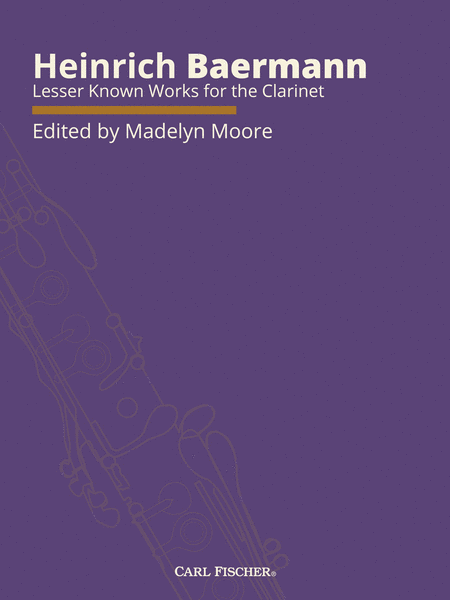
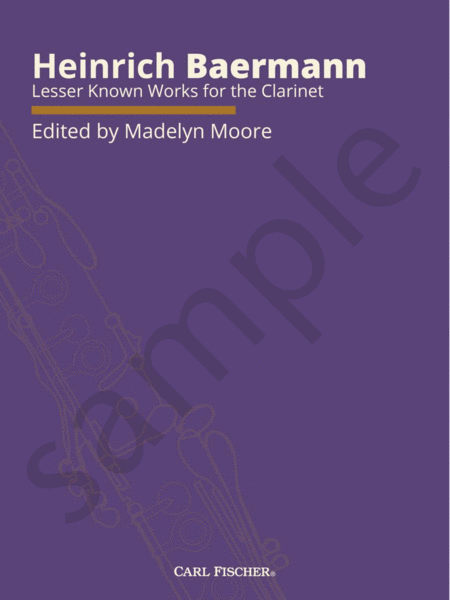
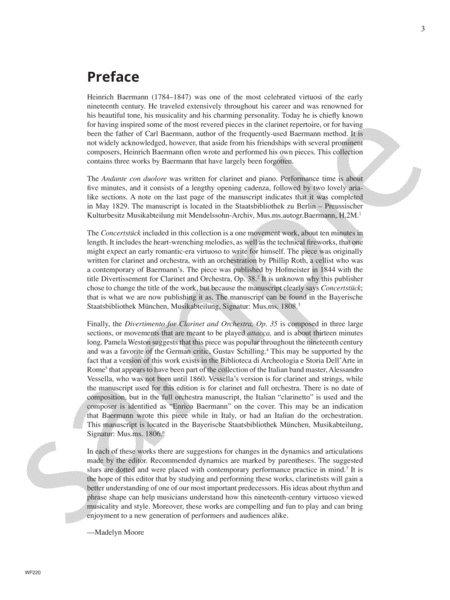
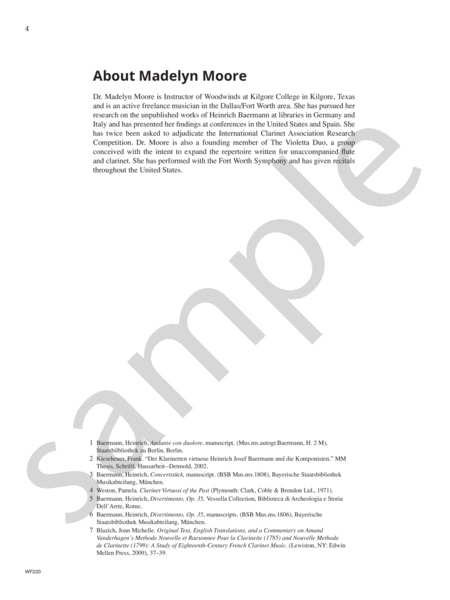
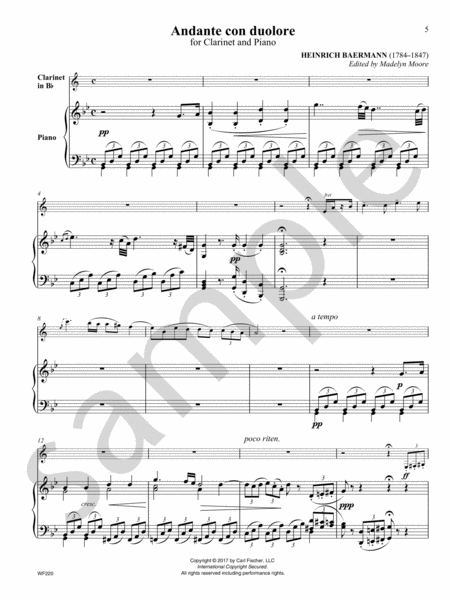
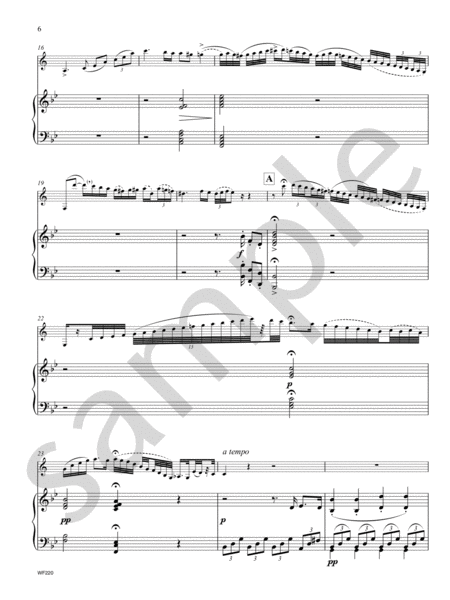
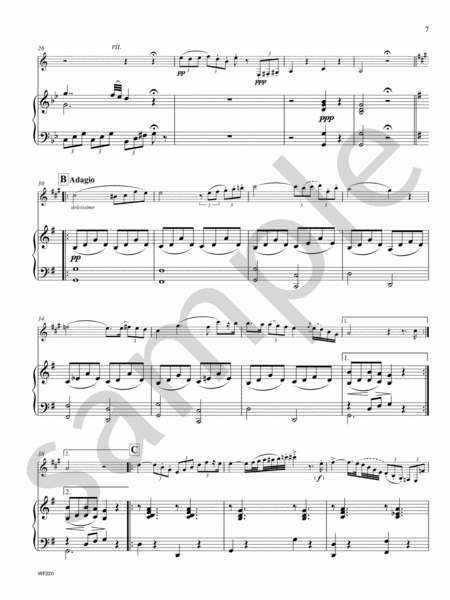
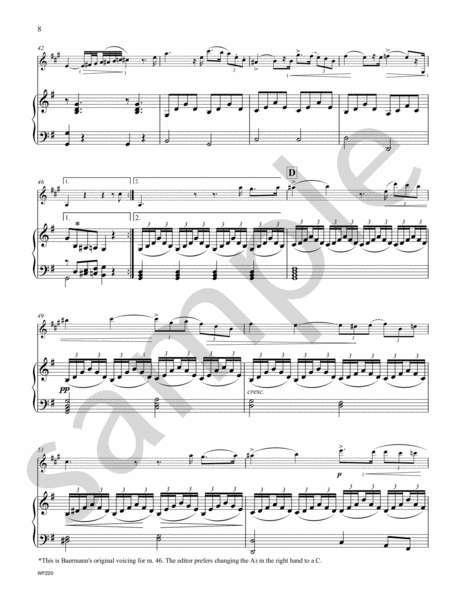
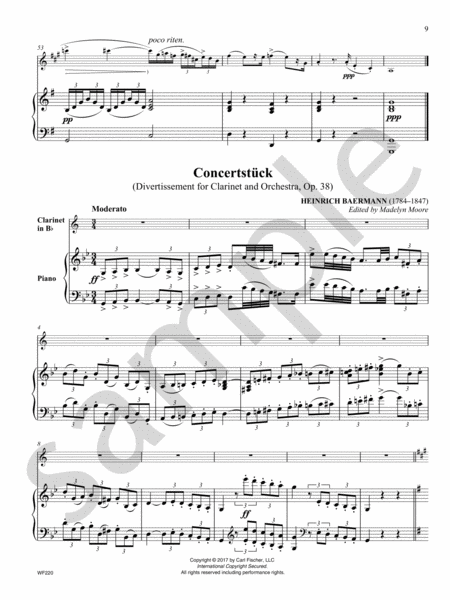
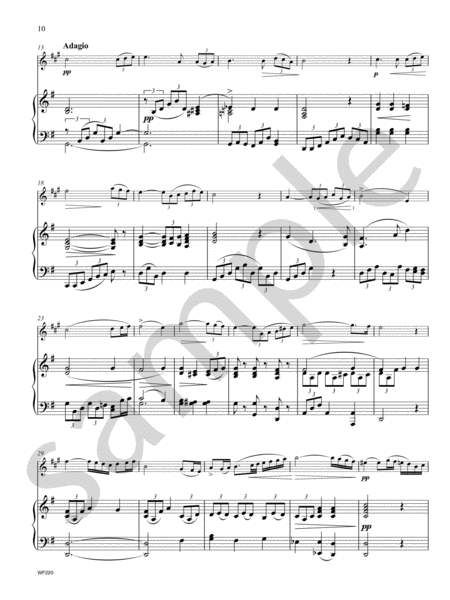
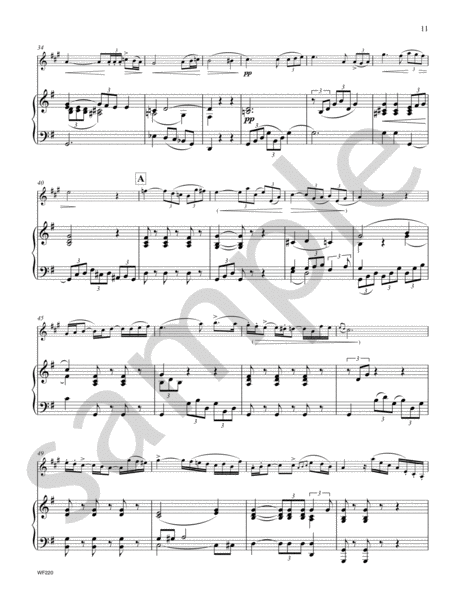
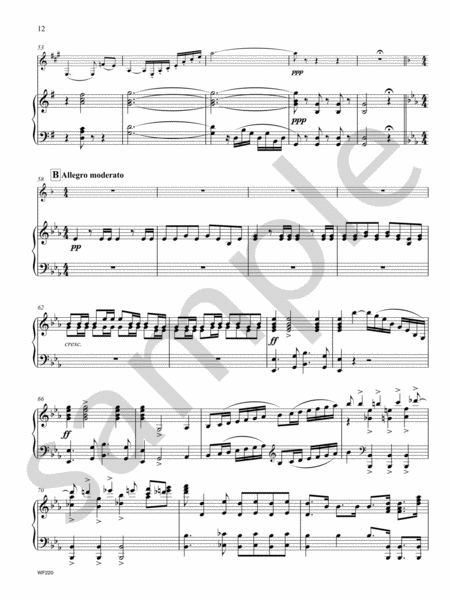
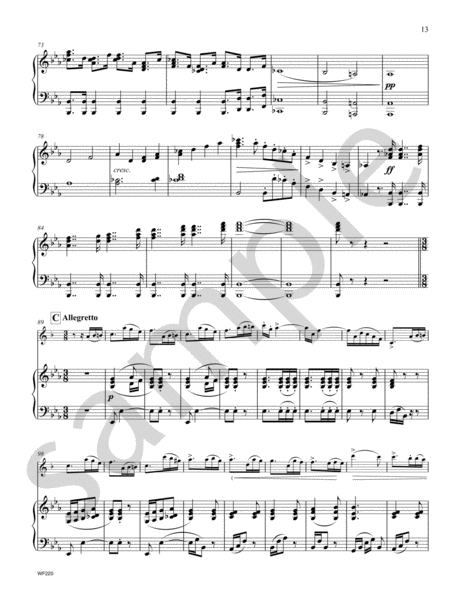
 Share
Share